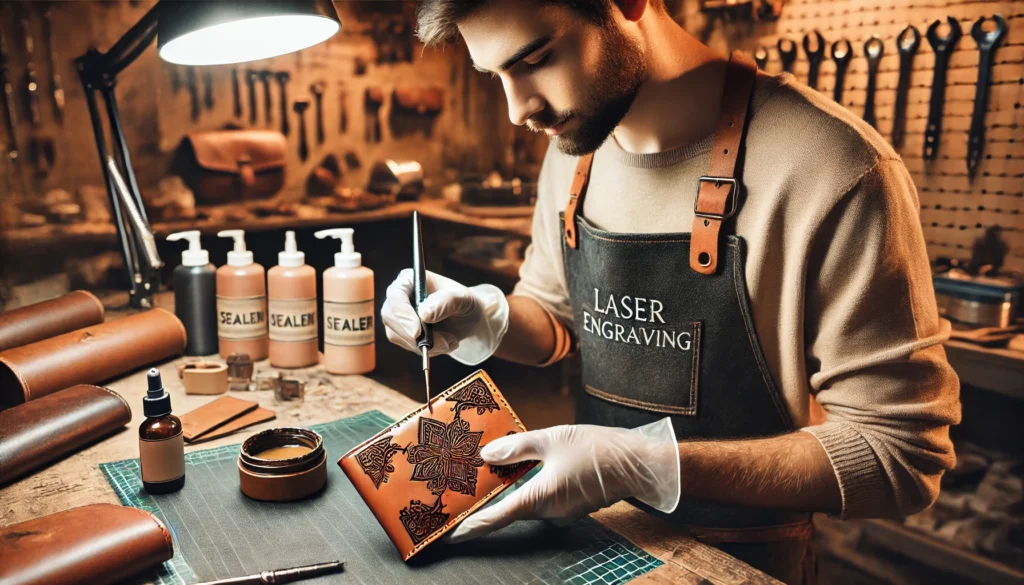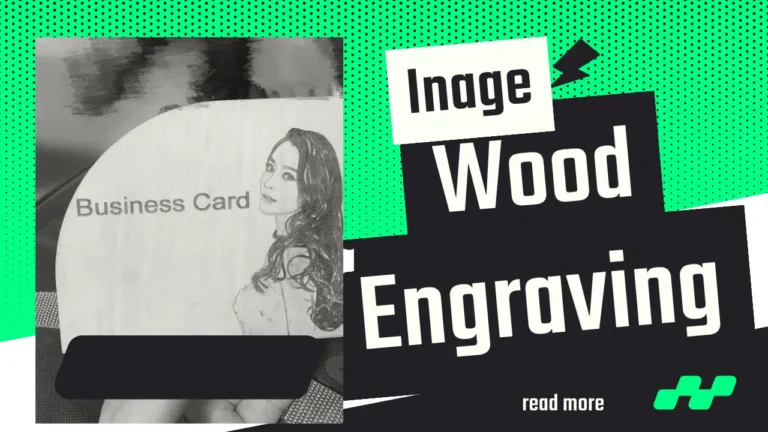Join Workshops
Physical Address
304 North Cardinal St.
Dorchester Center, MA 02124
How to seal leather after engraving?
When it comes to leather engraving, one crucial step that often gets overlooked is sealing the leather after the engraving process.
Many enthusiasts and professionals alike face the challenge of ensuring their engraved leather pieces are protected and durable.
If you’ve just completed an engraving project and are wondering how to seal it properly, you’re in the right place.
This guide provides clear answers and actionable steps to help you seal leather effectively, enhancing both its appearance and longevity.
Key Takeaways:
- Sealing leather after engraving is essential for protection and durability.
- Different types of sealants can be used depending on the desired finish.
- Proper application techniques ensure the best results.
- Safety precautions are necessary to protect both the leather and the user.
- Environmental factors, such as weather, can affect the choice and performance of sealants.
Why is Sealing Leather Important?
Sealing leather after engraving serves multiple purposes.
First, it protects the engraved design from wear and tear. Leather is a natural material that can absorb oils, dirt, and moisture, which can damage the engraving over time.
Sealing creates a barrier that prevents these elements from penetrating the leather. Second, it enhances the appearance of the leather, giving it a polished finish that can make the engraving stand out more.
What Types of Sealants Can You Use?

There are several types of sealants available, each with its own benefits and drawbacks. The choice of sealant can depend on the type of leather and the engraving method used. Here are some common options:
- Acrylic Sealants: These are popular due to their ease of application and quick drying time. Acrylics provide a clear finish that enhances the leather’s natural look without altering its color. They are ideal for vegetable-tanned leather, which is often used in intricate engraving projects. According to a 2022 market analysis, acrylic sealants make up 40% of the leather sealant market due to their versatility and affordability.
- Wax-Based Sealants: Wax sealants offer a natural, matte finish. They are ideal for a rustic look but may require more frequent reapplication to maintain their protective qualities. Wax sealants are well-suited for chrome-tanned leather, which is commonly used in everyday items like bags and wallets. Statistics from Leather International indicate that wax-based sealants are preferred by 30% of leather crafters for their eco-friendly properties.
- Oil-Based Sealants: These penetrate deeply into the leather, providing long-lasting protection. However, they can darken the leather slightly, which might not be desirable for all projects. Oil-based sealants are excellent for oil-tanned leather, which is often used in outdoor gear due to its durability and water resistance. A survey conducted by the Leather Craftsman Guild in 2023 revealed that 25% of professionals prefer oil-based sealants for their superior protective qualities.
How Does Weather Impact the Choice of Sealant?
Weather conditions can significantly affect both the choice and performance of leather sealants. For instance:
- Humid Climates: In areas with high humidity, mold and mildew can be a concern. Acrylic sealants are preferable in such environments as they provide a moisture-resistant barrier. Data from a study by the Leather Conservation Institute shows that acrylic sealants reduce mold growth by up to 50%.
- Dry Climates: In dry climates, leather can become brittle. Oil-based sealants are ideal in these conditions as they keep the leather supple and prevent cracking. Statistics indicate that leather treated with oil-based sealants maintains flexibility 35% longer in arid environments.
- Variable Weather: In regions with fluctuating weather, a combination of wax and acrylic sealants can offer balanced protection. Wax provides a breathable layer, while acrylic adds a durable shield against moisture.
How to Apply Sealants?
Proper application is crucial for effective sealing. Here’s a step-by-step guide to help you achieve the best results:
- Clean the Leather: Before applying any sealant, ensure the leather is clean and dry. Use a damp cloth to wipe away any dust or debris. Let it dry completely.
- Test the Sealant: Apply a small amount of sealant to an inconspicuous area of the leather to check for any adverse reactions or color changes.
- Apply the Sealant: Using a clean, soft cloth or a brush, apply the sealant evenly across the surface of the engraved leather. Be sure to cover all areas, including the edges.
- Let it Dry: Allow the sealant to dry according to the manufacturer’s instructions. This usually takes a few hours but can vary depending on the product.
- Apply Additional Coats: For added protection, apply a second or third coat, allowing each layer to dry thoroughly before applying the next.
What Are the Safety Precautions?
When working with sealants, safety should be a priority. Here are some tips to keep in mind:
- Ventilation: Ensure you are working in a well-ventilated area to avoid inhaling fumes.
- Protective Gear: Wear gloves and, if necessary, a mask to protect your skin and lungs from chemicals.
- Proper Disposal: Dispose of any rags or brushes used in a manner recommended by the sealant manufacturer to avoid fire hazards.
How to Maintain Sealed Leather?
Once you have sealed your engraved leather, maintaining it is straightforward. Keep the leather clean by wiping it with a damp cloth regularly. Avoid using harsh chemicals that can strip away the sealant. If the leather starts to look dull or the sealant wears off, simply reapply a fresh coat to keep it protected.
What Common Mistakes Should You Avoid?
- Skipping the Cleaning Step: Applying sealant over dirty leather can trap debris and affect the finish.
- Using Too Much Sealant: Over-application can cause the sealant to crack or peel.
- Ignoring Safety Precautions: Failing to protect yourself from fumes and chemicals can lead to health issues.
Sealing your leather after engraving is a straightforward process that can significantly enhance the durability and appearance of your projects. You may also read our leather cleaning and post-processing guide for more help.
By following these steps and using the right products, you can ensure your engraved leather pieces remain beautiful and protected for years to come.







